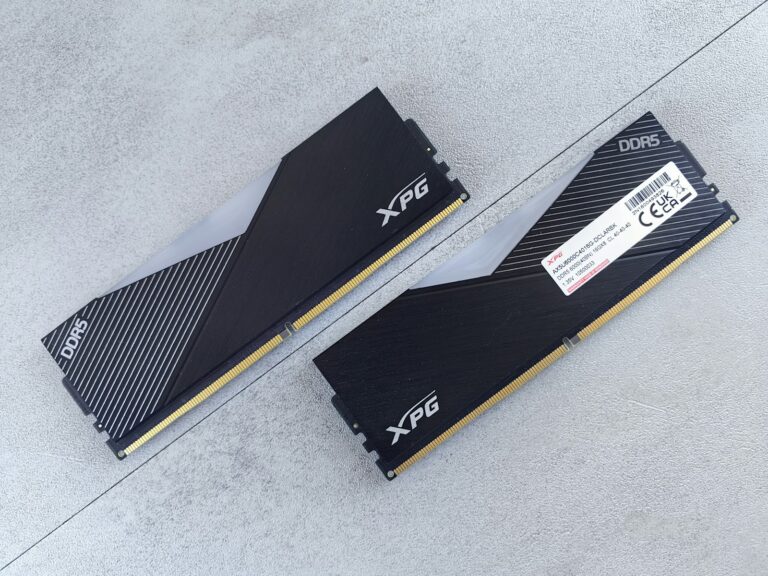Universal Flash Storage (UFS) technology has revolutionized how we handle data in mobile devices. Since 2010, UFS has continued to evolve, with the latest version, UFS 4.0, providing remarkable improvements in performance and storage capacity. UFS 4.0 offers nearly double the speed of its predecessors, making it a game-changer for mobile devices and beyond.
UFS technology uses a “Host and Device” model where the smartphone’s SoC acts as the host and the UFS memory chip serves as the device. This model has allowed for significant advancements in memory performance and efficiency. With UFS 4.0, devices can achieve slimmer designs due to the reduced thickness of the storage chips while expanding storage capacity up to 1 TB.
These advancements have set a new standard for flash memory, paving the way for future opportunities in various tech applications. As UFS 4.0 continues to integrate into newer devices, users can expect faster, more efficient, and larger storage solutions that push the limits of what our devices can do.
What Is Universal Flash Storage (UFS)?
Universal Flash Storage (UFS) is a high-performance storage standard developed by JEDEC for devices like smartphones, tablets, laptops, and automotive systems. It replaces older standards like eMMC by offering significantly faster data transfer speeds and improved efficiency.
UFS uses a serial interface (unlike eMMC’s parallel interface), allowing full-duplex communication — meaning it can read and write simultaneously for faster performance.
⚙️ Evolution of UFS Standards
| Version | Year Introduced | Max Sequential Speed | Key Improvements |
|---|---|---|---|
| UFS 2.0 | 2013 | ~1.2 GB/s | First major adoption (Galaxy S6 era) |
| UFS 3.0 | 2018 | ~2.9 GB/s | Lower power, improved thermal efficiency |
| UFS 4.0 | 2022 | ~4.2 GB/s | Doubled speed, reduced power consumption |
| UFS 5.0 | 2025 | Up to 10.8 GB/s | Nearly 2× faster, optimized for AI and edge devices |
🚀 The Latest: UFS 5.0 (2025)
🔹 Overview
UFS 5.0 was officially announced by JEDEC in 2025 and represents a major leap in storage performance. It’s designed to handle the growing demands of AI-powered smartphones, edge computing, and automotive systems.
According to JEDEC and multiple reports (PCMag, VideoCardz), UFS 5.0 achieves up to 10.8 GB/s sequential read speeds — nearly double that of UFS 4.0.
🔹 Key Features
- Speed: Up to 10.8 GB/s sequential read and higher write throughput.
- Efficiency: Improved power management for mobile and embedded devices.
- AI Optimization: Designed for AI inference workloads and real-time data processing.
- Backward Compatibility: Fully compatible with UFS 4.x hardware.
- Enhanced Reliability: Better thermal management and error correction.
🔹 Use Cases
- Smartphones: Faster app loading, camera processing, and system responsiveness.
- AI Devices: On-device machine learning and neural processing.
- Automotive Systems: Real-time navigation and sensor data handling.
- Edge Computing: Low-latency data access for IoT and industrial devices.
🔋 Power Efficiency and Thermal Improvements
UFS 5.0 continues the trend of reducing power per bit transferred, meaning devices can achieve higher performance without overheating or draining battery life. This is crucial for AI-capable smartphones and ultra-thin laptops.
🔄 Backward Compatibility
JEDEC has confirmed that UFS 5.0 maintains full compatibility with UFS 4.x hardware and software stacks, allowing manufacturers to upgrade devices without redesigning entire architectures (VideoCardz).
🔮 What’s Next for UFS?
While UFS 5.0 is just rolling out, future versions (like a potential UFS 5.1) are expected to:
- Integrate even tighter with AI accelerators.
- Support PCIe-like performance for mobile devices.
- Offer dynamic bandwidth scaling for energy efficiency.
🧩 Summary
| Feature | UFS 4.0 | UFS 5.0 |
|---|---|---|
| Max Speed | 4.2 GB/s | 10.8 GB/s |
| Power Efficiency | High | Higher |
| AI Optimization | Limited | Native support |
| Compatibility | 3.x, 4.x | 4.x compatible |
| Use Cases | Mobile, automotive | AI, edge, high-performance computing |
📚 Sources:
- PCMag – UFS 5.0 Storage Is Official
- VideoCardz – JEDEC Announces UFS 5.0
- TechSpot – Upcoming UFS 5.0 Standard
- Gadgets360 – UFS 5.0 Features
Understanding Universal Flash Storage (UFS)
How does UFS work?
UFS uses a serial interface with multiple lanes for sending and receiving data simultaneously. This “full-duplex” communication, along with command queuing, allows for significantly faster read and write speeds compared to eMMC.
UFS Versions and Speeds
UFS has evolved through several versions, each bringing improved performance and features:
| UFS Version | Max. Read Speed (MB/s) | Max. Write Speed (MB/s) | Key Features |
|---|---|---|---|
| UFS 2.0 | 550 | 150 | Faster than eMMC 5.1, sequential and random read/write improvements |
| UFS 2.1 | 850 | 260 | Enhanced power efficiency, improved reliability |
| UFS 3.0 | 2100 | 1200 | Significantly faster speeds, “Write Booster” for faster write operations |
| UFS 3.1 | 2100 | 1200 | Further optimizations, “Deep Sleep” for lower power consumption |
| UFS 4.0 | 4200 | 2800 | Double the speeds of UFS 3.1, lower power consumption, improved reliability |
Benefits of UFS
- Faster Speeds: Load apps, games, and files quicker.
- Smoother Multitasking: Handle multiple tasks without slowdowns.
- Improved Battery Life: More efficient power consumption.
- Better Camera Performance: Faster image and video capture.
UFS vs. eMMC
UFS clearly outperforms eMMC in terms of speed and efficiency. This means devices with UFS storage will generally feel snappier and more responsive.
The Future of UFS
UFS technology continues to evolve, with each new version pushing the boundaries of storage performance. UFS is expected to remain the dominant storage technology for mobile devices, delivering faster speeds, better efficiency, and new features in the years to come.
Key Takeaways
- UFS 4.0 nearly doubles the performance of previous UFS versions.
- The “Host and Device” model enhances memory efficiency and performance.
- Future devices will feature faster and larger storage solutions thanks to UFS 4.0.
Evolution of Universal Flash Storage Solutions
Universal Flash Storage (UFS) has significantly advanced from its inception. This evolution from UFS 2.0 to UFS 4.0 has led to faster data transfer speeds, improved performance, and greater storage capacities.
Historical Progression: From UFS 2.0 to UFS 4.0
UFS 2.0 was introduced to reduce latency and enhance data throughput. It provided numerous improvements over existing flash storage systems, offering speeds up to 1.2GB/s.
UFS 3.0 followed, doubling performance capabilities with read speeds reaching 2100 MB/s. Its design focused on low-power consumption, which benefited mobile devices.
UFS 4.0, launched by Samsung in 2022, brought transformative changes. It doubled the read speed to 4200 MB/s and increased write speed by 1.6x compared to UFS 3.1. This iteration was pivotal for high-performance applications like 5G devices and advanced smartphones.
The Role of JEDEC in Flash Storage Standards
JEDEC, the standards organization for microelectronics, plays a crucial role in defining UFS specifications. By setting transparent and consistent standards, JEDEC ensures interoperability and quality across devices.
They work in collaboration with the MIPI® Alliance, incorporating M-PHY and UniProSM standards for efficient data transport. These collaborations ensure UFS remains a reliable and robust solution for flash storage.
JEDEC’s involvement extends beyond just setting standards; they also promote advancements that support evolving market needs, ensuring UFS technology always meets high performance and reliability benchmarks.
Advancements in Memory Device Performance
Performance improvements in UFS are driven by advancements in semiconductor technology. Modern UFS devices use the latest NAND flash memory innovations.
For instance, commands are processed faster through advanced architecture, leading to enhancements in speed and efficiency. Low-power states reduce energy consumption, making UFS ideal for mobile applications.
The increase in storage capacities also impacts performance positively. Devices utilizing UFS can store and retrieve large amounts of data quickly, making it suitable for high-demand use cases.
Comparative Analysis: UFS vs. eMMC and SD Cards
UFS offers substantial advantages over eMMC and SD cards. eMMC is slower with speeds usually around 400 MB/s or less. Its simpler design does not support simultaneous reading and writing as efficiently.
SD cards are versatile, but their performance is limited compared to UFS. High-end SD cards can reach up to 300 MB/s, far less than UFS 4.0 capabilities.
In contrast, UFS excels in speed and reliability. Its command queuing enables it to handle multiple tasks simultaneously, which significantly enhances multitasking compared to eMMC and SD cards.
This evolution in UFS demonstrates its superiority and its pivotal role in the future of mobile and consumer electronics.
Frequently Asked Questions
Universal Flash Storage (UFS) significantly enhances data transfer speeds, performance, and efficiency in modern devices.
What is the significance of UFS 3.1 in modern storage solutions?
UFS 3.1 offers impressive read and write speeds, ensuring that mobile devices can handle large files quickly. This means less waiting and smoother performance for users.
How does UFS storage compare to traditional SSDs in terms of performance?
UFS storage is often faster and more power-efficient than many traditional SSDs. It is designed for mobile devices, offering quicker data access and improved battery life.
What advancements can we expect from the latest UFS storage technologies?
The latest UFS versions, like UFS 4.0, provide even faster read and write speeds. These advancements enable better performance in tasks such as high-resolution video recording and faster app loading.
How does UFS storage distinguish itself from eMMC?
UFS storage provides higher data transfer speeds and better power efficiency compared to eMMC. This results in improved device performance and longer battery life.
When is the UFS 5.0 expected to be released?
UFS 5.0 is expected to be released in the near future, though specific dates are yet to be confirmed.
In what ways does the UFS protocol enhance mobile device storage capabilities?
The UFS protocol improves mobile device performance by offering faster data transfer rates and better energy efficiency. It enables quicker app launches, smoother multitasking, and better overall user experience.







